- What is Aluminum Grade 3105?
- 3105 Aluminum Plate Specifications
- 3105 Aluminum Plate Advantages
- 3105 Aluminum Plate Disadvantages
- Equivalents of AA 3105
- 3105 Aluminum Plate Surface
- 3105 Aluminum Plate Performance Informations
- Common Applications of 3105 Aluminum Plate
- Mechanical Properties of 3105 Aluminum Plate
- 3105 Aluminum Plate Physical Properties
- 3105 Aluminum Plate Composition
- What is the Difference between 3003 and 3105 Aluminum?
- What is the Difference between 5052 and 3105 Aluminum?
What is Aluminum Grade 3105?
Aluminum grade 3105 is an aluminum-magnesium alloy containing 0.5% magnesium and 0.3% copper. It is a non-heat treatable alloy, which means it cannot be hardened by heat treatment. Instead, it acquires its strength and other desirable properties through cold working or strain hardening.
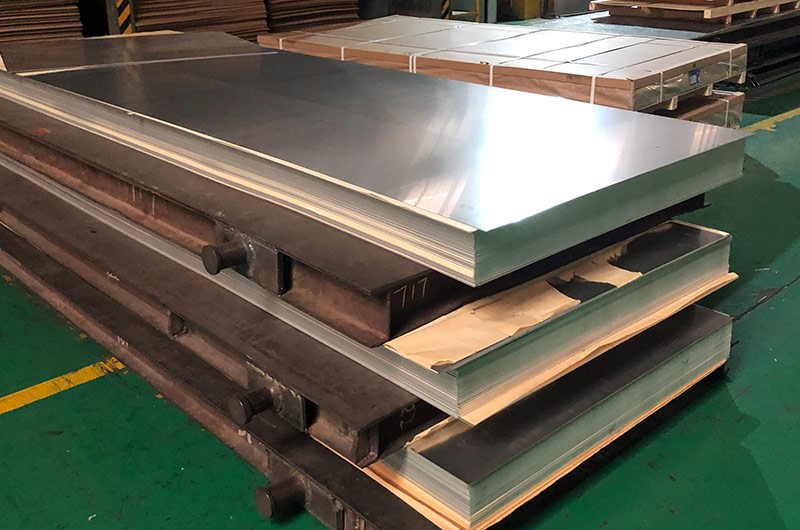
Features and Properties of Aluminum Grade 3105 include :
- Good deep drawing performance : the deep drawing performance of 3105 o aluminum plate is greater than that of 3105 h26 state, and the deep drawing performance of 3105 aluminum alloy plate before low temperature treatment is better than that of h24.
- High formability : 3105 aluminum plate has high plasticity in the annealed state, good plasticity in semi-cold work hardening, and low plasticity in cold work hardening.
- Good welding characteristics : 3105 grade aluminum is easy to weld and can be joined using a variety of welding techniques.
- Good corrosion resistance, good anodic oxidation, non-toxic and recyclable, poor machinability, etc.
3105 Aluminum Plate Specifications
- Temper : H14, H16, H18, H22, H24, H26, O
- Thickness : 0.2-6.35 mm (0.008-0.25 in)
- Width : 100-1524mm (3.94-60in)
- Length : Customizable
- Surface finish : Mill finish, brushed, anodized
- Density : 2.71 g/cm3 (0.098 lb/in3)
- Equivalents of 3105 : UNS A93105, ISO AlMn0.5Mg0.5, Aluminum 3105, AA3105, Al3105
- Standard : ASTM B209, EN573, EN485
3105 Aluminum Plate Advantages
- 1. Excellent corrosion resistance
- 2. Good electrical conductivity
- 3. Good mechanical properties
- 4. High formability and plasticity
3105 Aluminum Plate Disadvantages
- 1. No heat treatment except annealing
- 2. Poor machinability in cold hardened state
Equivalents of AA 3105
UNS A93105, ISO AlMn0.5Mg0.5, Aluminium 3105, AA3105, Al3105
3105 Aluminum Plate Surface
- Mill Finish
- Polished
- Brushed
- Checkered
- Embossed
- Color Coated
3105 Aluminum Plate Performance Informations
| Param | Value |
| Machinability | Machinability of AL 3105 is fair. Oil lubricants should be used for all machining operations. Machinability of the alloy when in the harder (H) tempers is improved over machining in the annealed (O) condition. |
| Forming | The forming characteristics of the alloy are very good by all conventional processes regardless of temper. Bend radii should be in the one thickness to 2 t range for annealed, H12, H14 and H16 tempers. The H18 temper requires bend radii of2 to 7 t, depending upon thickness of the material. |
| Welding | Weldability of this alloy is excellent by all commercial techniques. Arc welding is preferred for the best results. |
| Heat Treatment | A non-heat treatable alloy. |
| Hot Working | The hot working range (as for forging) is 205°C to 372°C. In that range the alloy is easily hot worked. |
| Cold Working | The cold working characteristics of AL 3105 are very good, even in the harder cold worked tempers. Bend radi for sheet up to 1/16″ thick vary from 1/2 to one t for all tempers. |
| Annealing | Annealing from a cold worked condition may be accomplished at 345°C followed by air cooling. |
| Aging | Not applicable to this alloy. |
| Hardening | Hardens as a result of cold working only. |
Typical 3105 Aluminum Plate
| Alloy/ Temper | Typical Applications |
|---|---|
| 3105 H14 | Metal cans, bottle caps, roof panels, good formability |
| 3105 H24 | Roof and siding, architectural trim, wall panels, higher strength |
| 3105 O | Packaging, insulation, high formability |
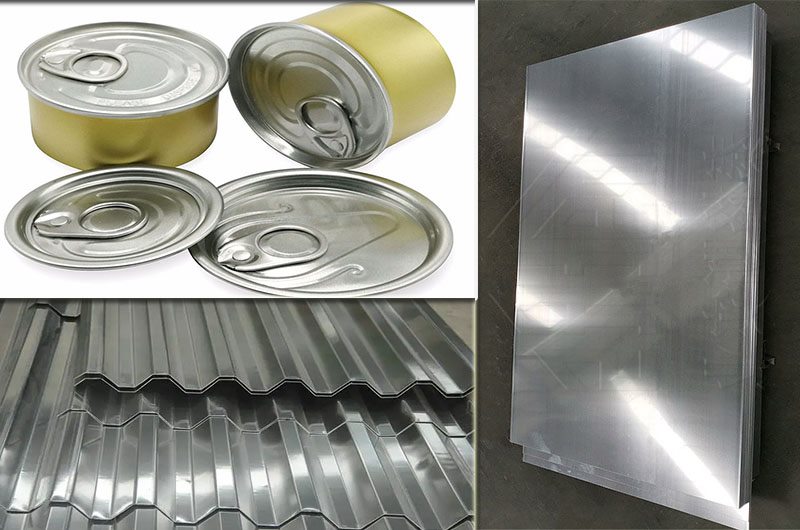
3105 H14 Aluminum Plate
3105 H14 Aluminum is a partially annealed, strain hardening temper that provides moderate strength and good formability. It is typically used in applications that require forming or stretching.
- Advantages : Including good corrosion resistance and easy weldability.
- Applications : Metal cans, closures and roofing panels. Specific examples include beverage cans, end closures for food cans, and sheet metal products.
3105 H24 Aluminum Plate
3105 H24 Aluminum is a fully annealed temper that provides higher strength than the H14 temper, but with less formability.
- Advantages : Including good corrosion resistance and high fatigue strength.
- Applications : For applications requiring higher strength, such as roofing and siding, and other building and construction applications. Specific examples include roof panels, architectural trim, and wall panels.
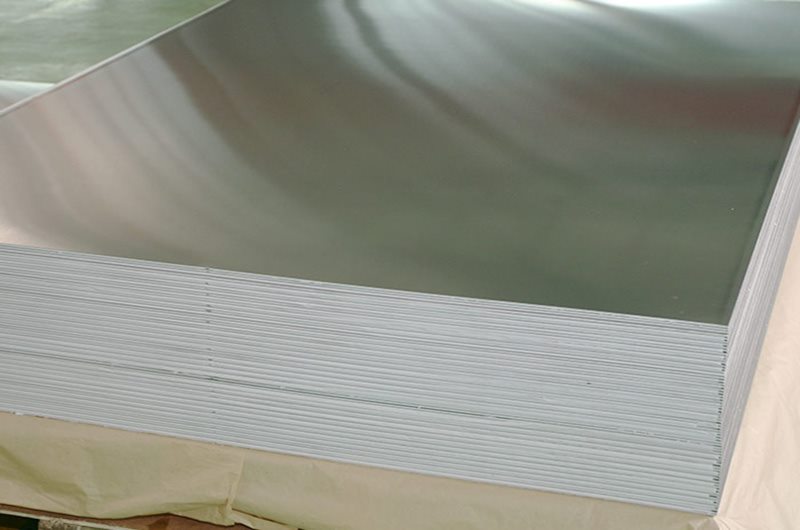
3105 O Aluminum Plate
3105 O Aluminum : This is a soft annealed temper that offers high formability but lower strength.
- Advantages : Including good corrosion resistance and easy weldability.
- Applications : It is commonly used in applications requiring high formability, such as packaging and insulation. Specific examples include packaging materials, heat exchanger fins and insulating plates.
Common Applications of 3105 Aluminum Plate
3105 Painted Aluminum Plate
3105 Painted Aluminum Sheet refers to coating a layer of paint or other protective layer on the surface of 3105 aluminum alloy to enhance its appearance and durability. This type of aluminum sheet is commonly used in a variety of applications such as roofing, siding, automotive, and signage.
Benefits of using 3105 painted aluminum include enhanced durability, improved appearance, and protection from corrosion and weathering.
Paint or other protective finish :
- Helps prevent scratches, fading, and other types of damage to aluminum surfaces
- Can be customized to meet the specific requirements of each application.
3105 Aluminum Plate for Roofing and Siding
Because of its corrosion resistance and ability to withstand harsh weather conditions, 3105 aluminum sheet is commonly used for roofing and siding in residential, commercial, and industrial buildings.
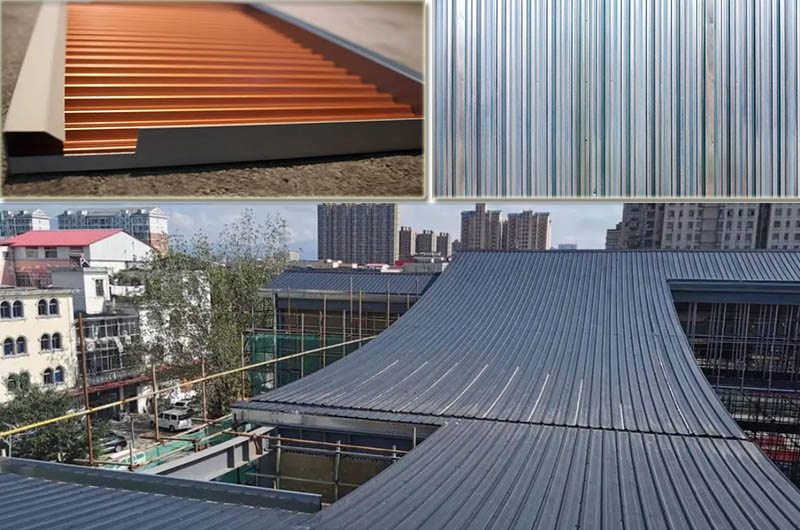
- Temper : 3105 H14, 3105 H16
- Advantage : Because of its high strength, corrosion resistance and formability
- Aluminum panels are often painted or baked in enamel to enhance their durability and appearance.
3003 Aluminum Plate for Heat Exchangers
3105 aluminum sheet is used in heat exchangers due to its good thermal conductivity and corrosion resistance.
- Temper : 3105 H24, 3105 H26
- Advantage : Has high thermal conductivity, corrosion resistance and formability.
- Aluminum sheets are usually formed into fins or tubes, which are then brazed or welded together to form the heat exchanger.
3105 Aluminum Alloy for Packaging
3105 aluminum plate is mostly used for packaging in the food and beverage industry because of its non-toxic and non-reactive properties.
- Temper : 3105 H18, 3105 H19
- Applicaton : 3105 aluminum sheet is usually made into cans, lids or lids and then painted with food grade lacquer or enamel.
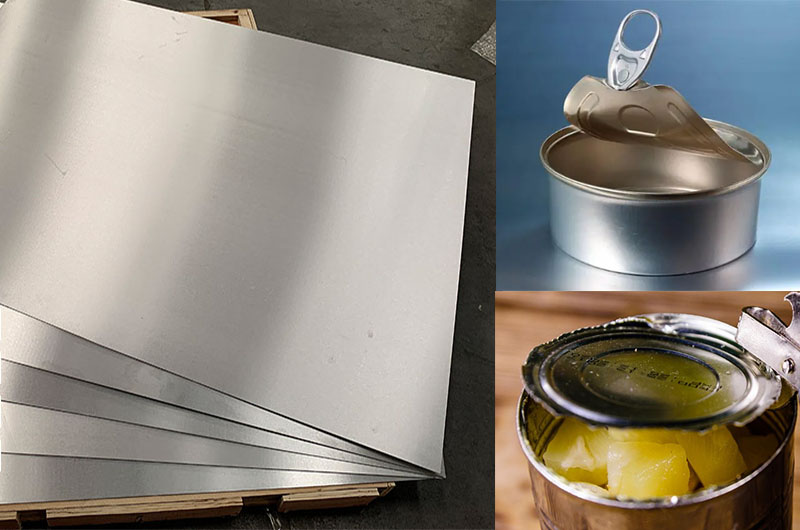
HVAC
3105 aluminum sheet is used in HVAC systems for its ability to withstand high temperatures and high humidity.
- Temper : 3105 H18, 3105 H19
- Advantage : High strength, corrosion resistance, high temperature and high humidity resistance.
- Aluminum sheets are often made into piping, coils or heat exchangers.
3105 Automotive Aluminum Plate
3105 aluminum sheet is used in automotive applications such as body panels and fuel tanks due to its light weight and high strength to weight ratio.
- Temper : 3105 H14, 3105 H16
- Advantage : Has high electrical conductivity, corrosion resistance and formability.
- Aluminum sheet is usually formed into coils or sheets.
Electrical Equipment
3105 aluminum plate is used in electrical equipment such as transformers and capacitors due to its good electrical conductivity.
Temper : 3105 H14, 3105 H16
3105 Aluminum Sign
3105 aluminum sheet is often used for signage because of its easy forming and high corrosion resistance
- Temper : 3105 H14, 3105 H16
- Advantage : High formability, corrosion resistance, and the ability to be easily painted or coated are often used for signage.
- Aluminum sheets are often made into letters, panels or signs.
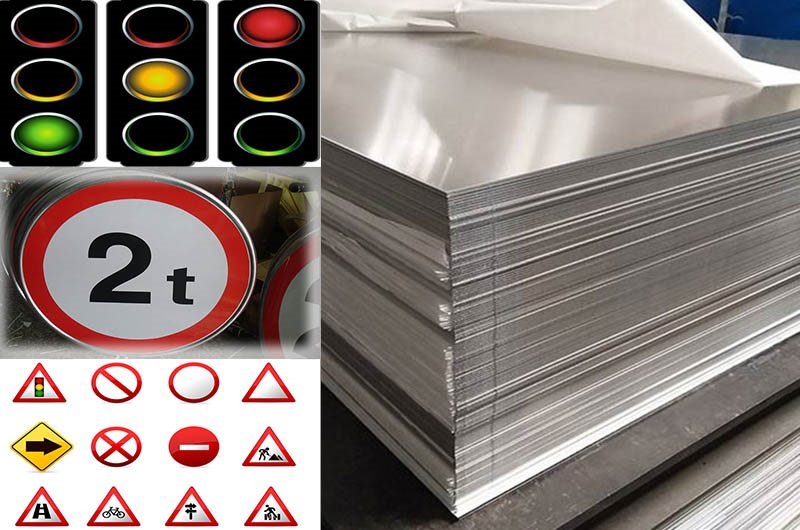
Mechanical Properties of 3105 Aluminum Plate
| Material | Temper | Tensile Strength (N/mm²) | Yield Strength (N/mm²) | Elongation on 50mm | |||
| 0.5 mm | 0.8mm | 1.3mm | 2.6mm | ||||
| 3105 Aluminum Sheet | 0 | 110-155 | – | 16 | 18 | 20 | 20 |
| 3105 Aluminum Sheet | H12 | 130-175 | 115 | 2 | 3 | 4 | 5 |
| 3105 Aluminum Sheet | H14 | 160-205 | 145 | 2 | 2 | 3 | 4 |
| 3105 Aluminum Sheet | H16 | 185-230 | 170 | 1 | 1 | 2 | 3 |
| 3105 Aluminum Sheet | H18 | 215 min | 190 | 1 | 1 | 1 | 2 |
3105 Aluminum Plate Physical Properties
| Property | 3105 Data |
| Density, lb/in3 | 0.0983 |
| Modulus of Elasticity, psi | 10.0 x 106 |
| Coefficient of Thermal Expansion, 68-212˚F, /˚F | 12.1 x 10-6 |
| Thermal Conductivity, Btu/ft hr ˚F | 99 |
| Specific Heat, Btu/lb ˚F | 0.214 |
| Electrical Resistivity, Microohm-in | 1.504 |
3105 Aluminum Plate Composition
| Element | 3105 |
| Silicon | 0.6 |
| Iron | 0.7 |
| Copper | 0.30 |
| Manganese | 0.30-0.8 |
| Magnesium | 0.20-0.8 |
| Chromium | 0.20 |
| Zinc | 0.40 |
| Titanium | 0.10 |
| Aluminum | balance |
| Other Elements (each) | 0.05 |
| Other Elements (total) | 0.15 |
What is the Difference between 3003 and 3105 Aluminum?
Both 3003 and 3105 aluminum alloys are aluminum-manganese alloys. 3003 aluminum is stronger than 3105, but 3105 has better formability and better corrosion resistance.
Chemical Composition
- 3003 aluminum alloy contains 1-1.5% manganese,
- 3105 aluminum alloy contains 0.5% magnesium and 0.3% copper.
- This difference in alloying elements affects their mechanical and physical properties.
Characteristic
- 3003 aluminum has higher strength than 3105
- 3105 has a higher elongation, making it more malleable and formable.
- 3105 aluminum also has better corrosion resistance than 3003, especially in marine environments.
What is the Difference between 5052 and 3105 Aluminum?
Both 5052 and 3105 aluminum alloys are aluminum-magnesium alloys, 5052 aluminum is stronger and more corrosion resistant than 3105, but 3105 has better formability and better welding characteristics.
Chemical Composition
- 5052 aluminum alloy contains 2.5% magnesium and 0.25% chromium
- 3105 aluminum alloy contains 0.5% magnesium and 0.3% copper
Performance
- 5052 aluminum has higher strength and better corrosion resistance than 3105, especially in harsh environments.
- 3105 aluminum is more formable than 5052 and has better welding characteristics.
